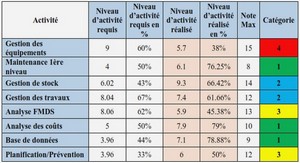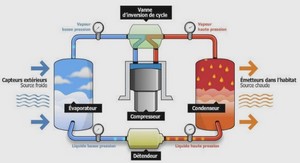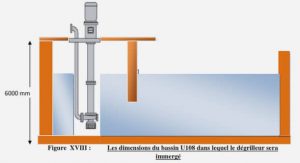Aeroelasticity of aircraft wings is described by the mutual interaction between aerodynamics and structural dynamics. Aeroelasticity models are based on physic hypotheses. When flight speed is in subsonic regime, the hypotheses of linear theories can be applied. However, as flight speed increases, the linear aeroelasticity theories become inaccurate in calculating the dynamic responses of aircrafts in transonic flow. The models must be refined to describe complex aeroelastic phenomena. In this chapter a literature review will be presented and the objective of this thesis will be stated. Then, its problematic will be described in detail. Finally, a general presentation of the methodology will be introduced.
In classical aeroelastic theories where Mach number is less than about 0. 7, aerodynamic loads (lift and moment) are assumed to be linear functions of a structural motion (displacement, velocity and acceleration) and vice versa. According to this hypothesis, the aeroelasticity analysis results in linear equations [1, 7, 8]. Although aerodynamic theory in such aeroelasticity analysis is based on the Navier Stokes equations which describe completely aerodynamic behaviors, more hypotheses were used for the purpose of simplification. Indeed, at low Mach number, airflow is considered inviscid and incompressible [9]. Moreover, the flow is assumed irrotational [10, 11]. These hypotheses lead to the linear potential equation of the classical aerodynamics where solutions can be obtained simply by linear superposition. For example, the most well-known Doublet Lattice method [12, 13] is widely applied in the linear aeroelastic analyses [14-16]. The commercial software MSC/NASTRAN is based on this method [17]. Other methods are developed and applied in computational aerodynamics using linear potential flow theory, such as the Vortex-Lattice method [18-20] and the panel method [21-25]. As the Mach number ofthe oncoming flow increases to more than about 0.7, airfiow is characterized by a transonic flow, where the flow becomes supersonic in sorne regions even though the Mach number of oncoming flow is still less than unity. The linear aerodynamic theories are no longer available since the flow can not be assumed incompressible [26]. A transonic dip [27-33] occurs in the flutter boundary which is unable to be captured by subsonic linear unsteady aerodynamic theories. This graduai dropping of flutter speed from the subsonic regime to a minimum in the transonic regime and then a rapid rising towards the supersonic regime is produced by complex transonic phenomena, such as the shock formation and the shock wave motion. In fact, the shock is the cause of the nonlinearity of a transonic flow which is not able to be captured by the linear aerodynamic theory [34]. Nonlinear aeroelasticity theories must be introduced to overcome this difficulty. The transonic small disturbance (TSD) equation method [28, 29, 34, 35] based on the full potential equation had been developed to obtain useful solutions when the computing technology was stillless advanced. The flow is linearized around the free stream by assuming a small disturbance away from the free stream. In fact, the goveming equations are dominated by nonlinearity which presents shock phenomena. The full potential equation which presents more completely the nonlinearity of a transonic flow gives improved solutions [36,37]. However, the flow is still assumed irrotational in both of the above methods. The accuracy is not affected when the shock is weak. For the purpose of capturing strong shocks, the Euler equations which represents rotational compressible flows are able to describe more accurately the nonlinearity of transonic flows [28, 38]. Certainly, calculations based on the Euler equations were not fast enough in the earl y days because of the limitation of the computer technology. However, the recent increase in computer speed and the improved algorithms for the numerical solutions of aerodynamics lead to a more accurate computation of aerodynamic loads in computational aeroelasticity with increasing geometrical complexity [39].
As the aeroelasticity model based on the Euler equations [ 40,41] has relatively high computationalloads, the complete three-dimensional aeroelastic problem of transonic flow is difficult to analyze because it has mixed linear and non-linear operators, symmetric and asymmetric matrices, explicit and implicit coupling, and can become physically unstable [42]. Although the direct method [43], where the :fluid and the structural goveming equations are combined and treated as a single monolithic system of equations, has advantages on algorithm stability and accuracy, it is impractical to rewrite a completely new code for solving a complex aeroelastic system [ 44-46]. In fact, computational aeroelasticity which is characterized by multiphysics is a particular case of fluid-structure interaction [ 47]. Its evolution is always accompanied by those of the CFD and CSD models which have different mathematical and numerical properties [2, 46]. Fluid dynamics is dominated by the Navier-Stokes/Euler equations while structural dynamics is dominated by the elasto dynamics equations. Traditionally, due to the computation complexity and computer technology limitations, a complete aeroelasticity system was analyzed using CFD and CSD software separately by different working groups and then using data communication between them. Such loosely coupled strategy becomes less effective for large structures with higher computational accuracy. The tight coupling strategy replaces the separating working groups through the CSD and CFD solvers and uses an information trans fer module for the communication between them [ 48]. This strategy facilitates the development of the complete software by developing CSD and CFD codes separately. The most interesting feature of this coupling strategy is the reutilization of the existing well-established CSD and CFD codes [ 49].
As the aeroelasticity model based on the Euler equations [ 40,41] has relatively high computationalloads, the complete three-dimensional aeroelastic problem of transonic flow is difficult to analyze because it has mixed linear and non-linear operators, symmetric and asymmetric matrices, explicit and implicit coupling, and can become physically unstable [42]. Although the direct method [43], where the :fluid and the structural goveming equations are combined and treated as a single monolithic system of equations, has advantages on algorithm stability and accuracy, it is impractical to rewrite a completely new code for solving a complex aeroelastic system [ 44-46]. In fact, computational aeroelasticity which is characterized by multiphysics is a particular case of fluid-structure interaction [ 47]. Its evolution is always accompanied by those of the CFD and CSD models which have different mathematical and numerical properties [2, 46]. Fluid dynamics is dominated by the Navier-Stokes/Euler equations while structural dynamics is dominated by the elasto dynamics equations. Traditionally, due to the computation complexity and computer technology limitations, a complete aeroelasticity system was analyzed using CFD and CSD software separately by different working groups and then using data communication between them. Such loosely coupled strategy becomes less effective for large structures with higher computational accuracy. The tight coupling strategy replaces the separating working groups through the CSD and CFD solvers and uses an information trans fer module for the communication between them [ 48]. This strategy facilitates the development of the complete software by developing CSD and CFD codes separately. The most interesting feature of this coupling strategy is the reutilization of the existing well-established CSD and CFD codes [ 49].
The change of the flow configuration caused by the structural motion yields limitation to apply the same spatial discretization for a complete computational aeroelasticity model. As the fluid-structure interface is in motion, the flow configuration is a time function [52]. The space near the fluid-structure interface will belong to a part of the fluid domain in one instant and another part of the structure domain in another instant. The fluid mesh should be repaired during the computation. The zonal grid technique [53] and the local remeshing [54] are techniques to avoid excessive element distortions of the fluid mesh near the moving structure. Another technique uses the interpolation of the speeds of the far-field boundaries and the moving fluid boundary to update the fluid grid speed [37]. In order to avoid strong distortions of the fluid mesh near the structure, an effective adaptive moving mesh is necessary. The Arbitrary-Eulerian-Lagrangian kinematic description [55, 56] which is generally applied in fluid-structure interaction [57] has the most interest. This method which is improved for numerical simulations with moving boundaries [58] is popular for adaptive moving meshes. As a result, the coupling becomes CFD-CSD-mesh coupling after another solver known as the « mesh solver » has been added to adapt to the moving fluid boundaries [59].
An information transfer module is required to establish the communication between the CSD and the CFD codes due to the non-matching of the fluid and the structural grids on the fluid-structure interface [60]. Because these two codes are independent, the structural mesh and the fluid mesh are not necessarily compatible. Furthermore, they may have different element types. Even if they have the same element types, the fluid element size is always smaller than the structural element size for specifie purposes of computations [45, 61, 62]. It is required to transfer the displacement of the structural boundary nodes to the fluid boundary nodes and the aerodynamic loads of the fluid boundary nodes to the structural boundary nodes. For the sake of computational accuracy, the information transfer must satisfy conservation of energy [ 4 7, 63-66]. This information trans fer is simple if the fluid spatial discretizing points coïncide with structural discretizing points at the fluid structure interface (same type and size for both CFD and CSD solvers). But usually, it is complex due to the non matching of the two space discretizations at the fluid-structure interface. A special module known as matcher must be built for the purpose of information trans fer on this interface [51].
Using a modular approach makes a modification of any solver and its reutilization easier [59]. Two approaches are possible to couple the three-field computational disciplines. One is the loose coupling [49] which has a convergence problem [67]. Another one is the tight coup ling which has properties of numerical stability and accuracy close to the direct method.
The transonic aeroelasticity with Mach number close to unity with a low angle of attack is one key area of the aeroelasticity analysis [27]. The goal of this thesis is to provide contributions in developing a comprehensive software of computations of nonlinear aeroelasticity using coupling strategy with an application of a robust CFD solver . This CFD-based software will be able to provide accurate flutter predictions.
INTRODUCTION |






